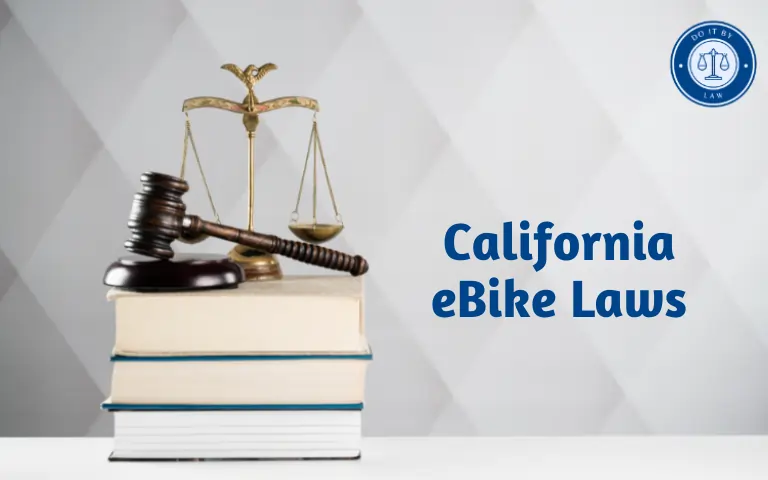California eBike Laws: What You Need to Know
Electric bicycles, or e-bikes, have exploded in popularity across California eBike Laws in recent years. However, the rapid pace of evolution in eBike technology and categories has also led to confusion around exactly what is legal and what rules apply to riders. This article outlines key details of California eBike regulations, including recent changes, penalties for violations, and remaining debates.
California State initially passed basic definitions and operating standards for electric bikes in 2015. The goals were promoting eBikes as an active transportation option to reduce car trips for short distances, while also addressing safety concerns around emerging motorized bike categories disrupting cycle paths. Rules have continued to be updated regularly since.
Who Do California eBike Laws Apply To?
California’s eBike laws govern the manufacturing and retail certification processes to legally sell designated classes of electric bikes. The operating regulations then apply to all riders on motor-assisted cycles in public spaces like roads, bike lanes, trails, and paths.
Private property owners can restrict eBike access if desired, but otherwise, state traffic and equipment rules mandate how these vehicles must be used in public areas.
Key Provisions, Requirements, and Restrictions
California divides eBikes into three regulatory classes based on their top assisted speed and motor power, with respective equipment requirements and usage guidelines:
Class 1 eBikes
- Max assisted speed: 20mph
- Motor power max: 1HP / 750W
- Operate in bike lanes or roads. No license or helmet is required.
Class 2 eBikes
- Max assisted speed: 20mph
- Motor power max: 1HP / 750W
- No bike lane usage allowed, recommend helmet
Class 3 eBikes
- Max assisted speed: 28mph
- Motor max: 1HP / 750W
- No bike lane usage allowed, helmet mandatory
Equipment Requirements
All classes must have fully operable pedals, an electric motor under 750W, and maximum braking capability including a speedometer. Class 1 & 2 must have max assisted speed of 20mph whereas Class 3 can go to 28mph.
Class 3 additionally requires a speedometer and must have the label “Class 3 electric bicycle” printed on the bike.
Minimum Age
- Class 1 & 2: No minimum age
- Class 3: Minimum 16 years
Helmet Usage
- Class 1: Not required
- Class 2: Not required but recommended
- Class 3: Mandatory helmet meeting standards for bicycle safety
Bike Lane Access
- Class 1: Allowed
- Class 2: Prohibited
- Class 3: Prohibited
Sidewalk Riding
Local regulations determine if riding on sidewalks is allowed. Statewide eBike laws do not restrict sidewalk usage but require yielding to pedestrians. Many areas ban sidewalk riding for Class 3 eBikes and/or all electric bike classes.
Speed Limit
Must follow posted speed limits for bikes where riding. Can exceed 20mph or 28mph limits only using human pedal power, not motor assistance.
DUIs
Riders under the influence of any class eBike can receive DUIs and related penalties for driving motor vehicles.
Penalties for Violating California eBike Laws
Fines for illegally using electric bicycles in California can include:
- Up to a $250 fine for riding a Class 3 eBike without a helmet
- A $196 fine for riding a Class 2 or 3 eBike in prohibited bike lanes
- Up to a $1,000 fine for unlawfully modifying an eBike’s motor to exceed speed capabilities
Violations like ignoring traffic signals may also apply normal bicycle fines to riders per local regulations. Besides legal penalties, riding unlawfully also commonly results in injury or property damage from Collisions and/or bike confiscation by authorities.
California eBike Laws Recent Changes and Proposed Reforms
California updated its electric bicycle laws in 2021 to further define trike/quadricycle regulations, compatibility with bike paths, and improve safety provisions. Additional revisions are already being considered for 2023-2024 including:
Potential Upcoming Changes:
- Creating a “Class 4” category for higher speed cycles like seated scooters
- Adjusting assisted speed caps to synchronize with federal laws
- Minimum age reduction to 14 for Class 3 with restrictions
- Usage zones specific to each eBike class mapped in cities
- Tightening manufacturing standards for functional pedals to prevent throttle-only abuse
- Grant programs to replace car trips under three miles
Controversies, Debates and Challenges
The rapid evolution of eBike diversity and adoption across California has also brought several tensions requiring ongoing regulatory reassessment:
Shared Infrastructure Burden
Major concerns around density impact on bike lanes from faster electric cycles mixing with traditional pedal bikes, micro-mobility, and pedestrians all competing for space.
Age Minimums
Debates regarding maturity for safe operation of semi-motorized vehicles by younger riders as youth adoption grows.
Enforcement Gaps
Education lags and inadequate traffic policing to curb sidewalk riding, modification of legal bikes for higher speeds, and helmet avoidance.
Insurance Requirements
Questions around liability coverage gaps for different classes as modal share increases but laws treat most eBikes the same as analog bikes.
Access Equity
Criticism that the benefits of eBikes for sustainable short-distance transportation remain narrowly concentrated among affluent communities currently.
Ongoing legislation aims to align the pace of technological innovation in eBikes with appropriate supportive and adaptive policies to address these tensions across California cities.
California eBike Laws Conclusion & Key Takeaways
California’s eBike laws continue evolving to encourage electric bicycles’ safety and growth as a key mobility source that also advances environmental sustainability goals. Key takeaways for riders include:
- Three classes exist with respective equipment, use zones, and age rules
- Class 1 can leverage bike lanes; Class 2 & 3 cannot
- Helmets are mandatory for Class 3, and recommended for Class 2
- Stay on permitted surfaces; obey traffic laws
- Fines and bike seizures can apply for violations
Hopefully, this summary has clearly outlined the current status of California’s regulations applicable to owning and operating electric bikes. Final usage permissions may vary locally, so check city/county codes for specific riding allowances and restrictions in your communities.







